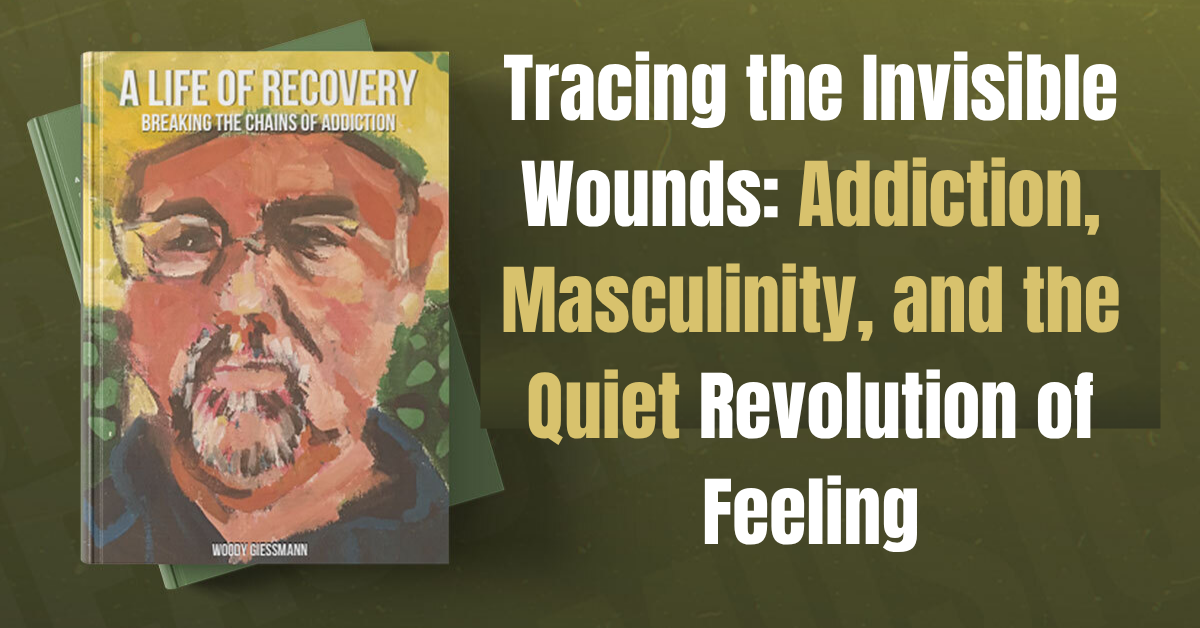There’s a particular kind of strength that rarely gets celebrated. It’s not the loud kind. It doesn’t shout or win awards. It doesn’t always look like progress from the outside. But it’s the kind that shows up in therapy offices, in handwritten letters never sent, in the decision to tell the truth when silence would be easier. Woody Giessmann A Life of Recovery is full of that strength.
On the surface, the book traces Giessmann’s journey from musician to addict to a counsellor—a life shaped by both the wild highs of rock and roll and the devastating quiet of family grief. But look closer, and you’ll find something more radical beneath it: a challenge to how we think about manhood, vulnerability, and emotional survival.
Giessmann came of age in the 1970s, a time when boys were taught—explicitly or implicitly—that to be a man was to hold it together. Emotions were to be subdued, problems handled in private, and pain turned into silence. As a child and teenager, Giessmann learned those lessons well. When his older brother Brian died by suicide, he internalized not just the grief but the belief that he had to carry it alone. And when that weight became unbearable, he did what many young men in pain do—he numbed.
What follows is a descent familiar to anyone touched by addiction: early exposure to alcohol, escalating drug use, destructive relationships, and a gradual loss of direction. But what makes Giessmann’s account unique is the way he contextualizes that spiral. He doesn’t frame it as a personal failing. He traces it back to the roots—family secrecy, generational trauma, and the cultural pressure on boys to be invulnerable.
There’s a moment in the book when Giessmann describes being praised for “holding it together” at his brother’s funeral. He was just a teenager, barely holding back tears, unsure of what to say or do. Adults admired his stoicism. No one asked how he was. That scene speaks volumes. It’s not that people didn’t care. It’s that they didn’t know how to reach someone raised to keep everything inside.
In this sense, A Life of Recovery is more than a memoir of addiction—it’s an interrogation of masculinity itself. What do we lose when boys are taught not to cry? What happens to a family when the men are emotionally absent—not out of cruelty, but because they never learned how to be present? What is passed down when silence becomes the default response to pain?
Giessmann doesn’t answer these questions directly. He lives them. And slowly, over the course of the book, he begins to unlearn what he was taught.For him, recovery isn’t just about not using drugs. It’s about figuring out how to feel again. How to talk freely. How to name your grief. How to be with someone who is hurting without trying to solve things.
His journey isn’t linear. There are relapses—not just with substances, but with old patterns. There’s medical trauma, including a near-fatal brain aneurysm that forces him to relearn basic functions. But even in these moments, Giessmann resists the urge to cast himself as a hero. He doesn’t glamorize his resilience. He just tells the truth about what it took to keep going.
A lot of the second half of the book focuses on his job as an interventionist and addiction counselor. In this case, Giessmann shares what he has learned from his own life with others. He writes about families with compassion and candor, knowing that they frequently don’t know how they help keep addiction going. He tells them not to make their loved ones feel bad, but to help them change by remaining honest and kind.
But what’s most striking is that even as a professional, Giessmann remains deeply human. He acknowledges his own blind spots. He admits when he doesn’t have the answer. He makes it clear that the work of healing—whether personal or relational—is ongoing.
And maybe that’s the quiet revolution this book enacts. In a world that still struggles to make space for men’s emotional lives, Giessmann models something rare. Not just openness but emotional fluency. The willingness to revisit pain without being consumed by it. The humility to know that healing requires community. And the courage to offer others what you never received yourself.
There’s a particular audience for this book, of course—those affected by addiction, families in crisis, people in recovery. But its reach goes further. It speaks to any man who grew up believing that his feelings were dangerous. To any parent who wonders how to break the cycle. To anyone trying to build something more honest than what they were given.
Giessmann never pretends it’s easy. There’s no triumphant finale, no moment where everything clicks. What he offers instead is practice—the kind of slow, daily work that real change demands. And in that, there’s hope. Not the glittering, overpromised kind. But the grounded, lived-in kind that says: You can start again. You can do it differently. Even now.
That kind of message doesn’t need a spotlight. It just needs to be heard. And A Life of Recovery ensures that it is.

